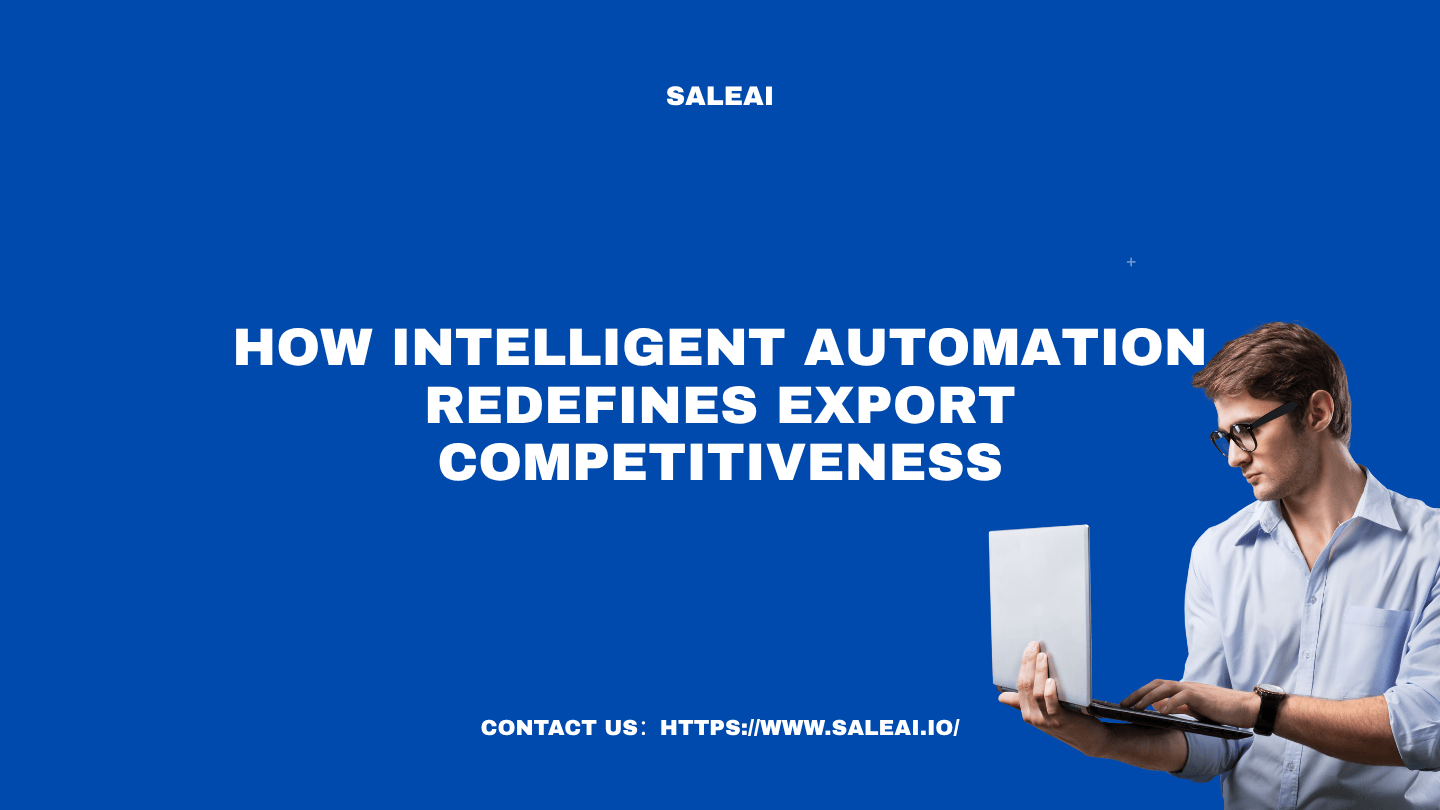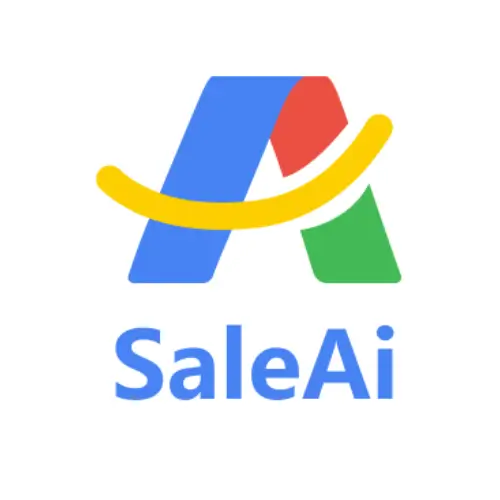
In a world where trade speed and precision define opportunity, competitiveness is no longer determined by who works hardest—it’s determined by who automates smartest.
The rise of intelligent automation—AI systems capable of understanding business logic and executing tasks autonomously—is rewriting how global exports operate.
At the forefront of this shift is SaleAI, a platform redefining the rhythm of global commerce by turning complexity into clarity, and data into execution.
1. The New Definition of Competitiveness
For decades, export competitiveness meant scale: larger factories, more trade routes, bigger teams.
But in today’s digital economy, competitiveness is cognitive.
According to the World Economic Forum (WEF), 70% of future trade advantages will come from “digital capacity,” not physical infrastructure.
That includes AI-driven decision-making, data integration, and process automation.
What used to be an arms race of manpower has become a race of intelligence.
Systems like SaleAI’s Super Agent demonstrate this new era—where businesses gain efficiency not by hiring more, but by executing faster.
2. Why Traditional Trade Models Fall Behind
Traditional trade operations rely heavily on human bandwidth.
Exporters manually collect data, prepare quotes, draft emails, and monitor follow-ups.
This model worked when competition was regional. But in a connected world, where a competitor across the ocean can respond to a buyer within minutes, manual execution simply cannot keep up.
As OECD research highlights, small and medium exporters lose up to 30% of potential deals each year due to “information delays and fragmented systems.”
Intelligent automation solves that gap.
AI can integrate, interpret, and act on trade data in real time—transforming latency into leadership.
3. The Three Engines of Automated Competitiveness
Intelligent automation changes the nature of global competitiveness through three interconnected engines:
1) Execution Speed
AI Agents like Super Agent and LeadFinder can generate buyer insights, verify data, and build outreach lists in minutes.
The faster a business identifies and reaches the right lead, the greater its advantage.
2) Cognitive Precision
Tools such as ReportCraft Agent analyze multiple data sources—export records, website signals, hiring activity—to prioritize high-value buyers.
Decisions are no longer based on intuition but on contextual AI reasoning.
3) Consistent Intelligence Flow
Unlike human processes that reset every morning, AI maintains a continuous intelligence loop.
Every email, quote, or report adds to the system’s understanding—turning execution into long-term strategic data.
Together, these three layers transform a reactive trade operation into a self-improving export engine.
4. The Role of AI Execution in Global Strategy
AI execution is not about replacing trade professionals—it’s about freeing them.
By automating the repetitive, it expands human capacity for strategy.
A McKinsey Global Institute study found that exporters using AI in their sales and logistics operations can achieve 25–50% cost reduction while increasing deal velocity.
That’s why intelligent execution is now part of national trade policy discussions.
Countries like Singapore and South Korea have already adopted “Smart Trade” frameworks that encourage exporters to embed AI directly into operations.
SaleAI aligns with that vision: a platform built not for automation alone, but for strategic augmentation.
5. From Fragmented Systems to Integrated Intelligence
Competitiveness depends on connectedness.
Yet most exporters still use five or more disconnected tools to manage one buyer relationship.
Intelligent platforms like SaleAI eliminate that inefficiency.
Through Agents such as:
-
MailWriter Agent for personalized communication
-
ReportCraft Agent for insight synthesis
-
InsightScan Agent for due diligence
the platform brings every step—lead, quote, follow-up, and analysis—into a single intelligence network.
This shift from fragmented tools to integrated AI logic is what creates true operational competitiveness.
6. Measuring the Competitive Edge
Competitiveness is measurable.
With intelligent automation, exporters experience:
-
60% faster quoting and response cycles
-
40% fewer data-entry errors
-
35% higher follow-up engagement
-
Up to 3x efficiency gain per trade professional
These outcomes don’t come from “working harder,” but from thinking differently.
As AI maturity increases, these efficiency gains compound—turning data into a permanent competitive advantage.
7. The SaleAI Advantage
In this new trade environment, SaleAI is not just software—it’s an execution infrastructure.
Each Agent contributes to a unified system where intelligence becomes action:
-
Super Agent – executes complex trade tasks end-to-end
-
LeadFinder Agent – finds verified global buyers
-
MailWriter Agent – automates personalized communication
-
ReportCraft Agent – generates analytical trade reports
-
InsightScan Agent – assesses company credibility and activity
Together, they redefine how exporters build competitiveness—through intelligence, not intensity.
Conclusion: Compete with Intelligence
Global trade is entering an era where competitive advantage is algorithmic.
Those who automate with purpose will outthink, not just outperform.
Intelligent automation is not the end of human work—it’s the evolution of it.
And SaleAI stands at the intersection of that evolution, empowering exporters to move faster, decide smarter, and compete globally with AI precision.
👉 Start Free Trial: https://www.saleai.io/


